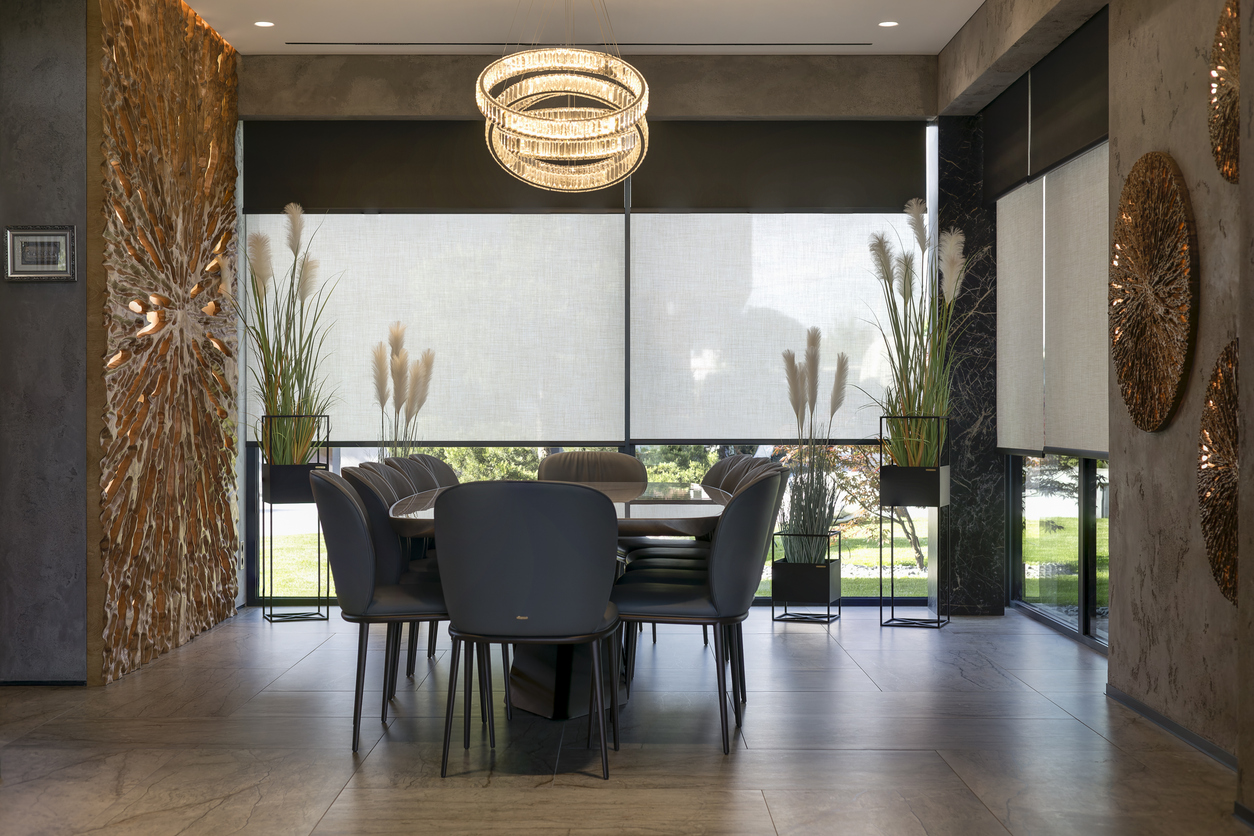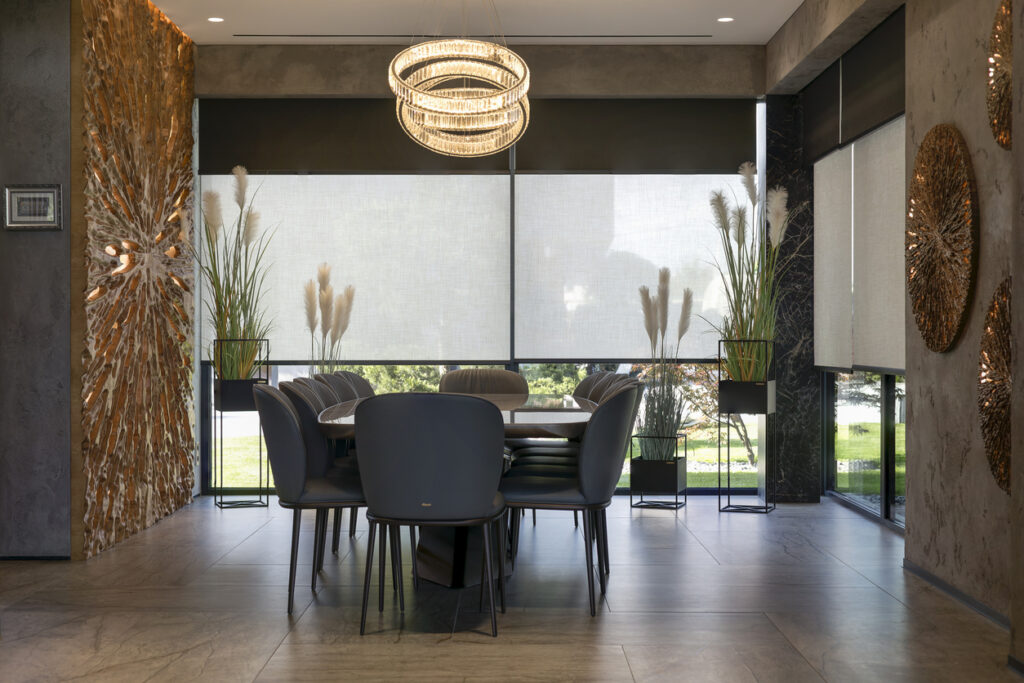
The Power of Passive Design: Autonomous Solar Shades for Energy-Efficient Climate Control
If you appreciate thoughtful design and want to make your home more environmentally sound, you’re in the right place. Perhaps you’ve already started composting, switching to reusable bags or investing in energy-efficient appliances, so when it comes to your living space, passive design becomes the next meaningful step.
Autonomous solar shades are an excellent passive design choice that can help you reduce energy costs and lighten your environmental footprint. Here’s how they work and how to incorporate them into your home for maximum benefit.
What Is Passive Design?
Passive design is an architectural approach that takes advantage of natural elements like airflow, sunlight and thermal mass to regulate indoor temperature and enhance comfort. Instead of relying on heating or air conditioning, a passive design house is built or retrofitted to use the sun’s energy with materials designed to deflect or store heat to maintain a pleasant interior climate day and night.
Unlike traditional active design systems that consume large amounts of electricity or fuel, passive design strategies reduce reliance on mechanical cooling and heating. This translates to greater energy efficiency and a more climate-conscious way of living. It’s about working with nature to keep your home comfortable in a natural way.
Cost is another key consideration in passive architecture. Because the design process harnesses natural elements to adjust to different climate situations, this means spending less on fuel or energy bills down the line. Passive design elements are also low maintenance. While some upfront investments may be required, you’ll find the long-term gains far outweigh the initial expense.
Passive Solar Shading as a Smart Upgrade
Passive shading minimizes heat gain in the summer and allows sunlight to warm your space in the winter. Think of it as climate control without the switches and buttons.
The idea comes at an opportune time for homeowners currently battling the rising heat index. The heat island effect is a phenomenon 95% of the largest cities in the U.S. experience. It happens when urban areas built mostly of asphalt, concrete, glass and metal collect heat by trapping sunlight, increasing the temperature quickly. The quest for a truly livable home is now more important than ever.
Autonomous solar shades are an example of a modern solution that elevates passive design strategies. These intelligent window treatments automatically adjust based on the time of day, amount of sunlight and indoor temperature. Some models are solar-powered and integrate with smart home systems, so they act as intelligent filters protecting the home from excessive heat while letting natural light in.
Combining fundamental passive shading strategies with smart technologies hastens the transition from a hot and stuffy room to a naturally cool and pleasant living space.
Benefits of Passive Solar Shading
Passive solar shading has a great number of upsides you should consider. Here are seven reasons why it’s beneficial for your home:
- Balanced daylight: Solar shades allow you to enjoy natural lighting while reducing glare and shielding your furniture from heat damage.
- Lower carbon footprint: The shades deflect sunlight, keeping HVAC systems performing optimally. Using less energy means reducing your contribution to greenhouse gas emissions.
- Reduced energy bills: With better natural climate control, the need to use heating or air conditioning drops significantly.
- Consistent indoor comfort: Passive shading helps maintain a stable indoor temperature without having to constantly adjust the thermostat.
- Effortless use: Many autonomous shades adjust automatically or can be controlled remotely, reducing the need for manual adjustments.
- Enhanced privacy: Solar shades come in different transparencies and can provide privacy without making your space feel closed off.
- Stylish: Solar shades come in a range of fabrics, textures, colors and designs to match any interior.
Whether you’re planning to build from scratch or make small upgrades to an existing area, improvements are scalable. Passive shading is a practical way to enhance your home’s functionality, while keeping with sustainability goals.
Passive Solar Design Examples
The beauty of passive solar energy strategies lies in not requiring brand-new construction. You can integrate them gradually or retrofit them into any space. Some passive solar design examples to consider include:
- Optimized window placements: Minimizing west- and east-facing windows can lower heat gain and stabilize indoor temperature. South-facing windows are ideal for capturing the winter sun.
- Pergolas and roof overhangs: These features help block high-angle summer sun while still allowing low-angle winter sunlight to come in.
- Light shelves and reflective surfaces: These bounce light deeper into a room, reducing the need for artificial lighting.
- Solar shades and screens: Install these in your sunniest rooms for immediate benefits in energy savings and comfort. Automated shades can respond to sunlight at once without any further intervention on your part.
- Airtight structures: Having an airtight room protects against unintentional inward or outward air leakage, which helps reduce the cooling or heating demand and prevents rot and mold.
- Thermal mass elements: Materials like tile, concrete or stone absorb heat during the day and release it slowly at night, helping balance indoor temperatures and humidity.
- Strategic landscaping: Having woody shrubs and trees near windows can block the summer sun, while allowing winter light to filter through when leaves fall.
Passive houses are sustainable in a way known to reduce reliance on cooling and heating systems and the cost of maintaining a comfortable home. The money that would have gone toward appliances and mechanical systems can now be spent on improving ventilation, installing larger and better-placed windows, having more abundant and thoughtful foliage, and applying thicker insulation.
Setting up a Passive Design House
You don’t have to overhaul your home to benefit from passive design. Installing autonomous solar shades and roof overhangs is one of the easiest and most effective initial steps. Start with a room, or a section of your home, and go from there. Pair shades with smart landscaping choices or reflective interior materials and you’ll feel the difference immediately.
As you explore different design options, you’ll find each choice can build on the last, creating a space that’s more comfortable, efficient and better for the planet — and it all starts with one simple upgrade.



Post a comment